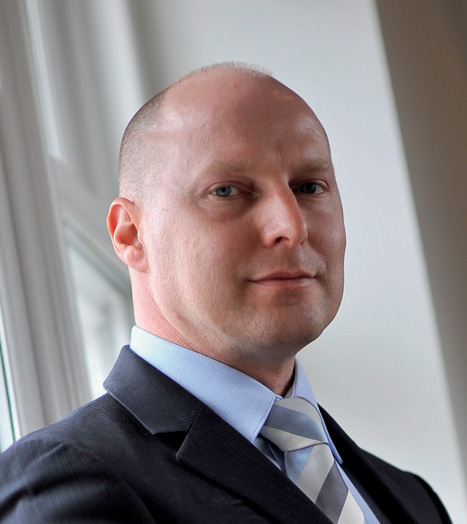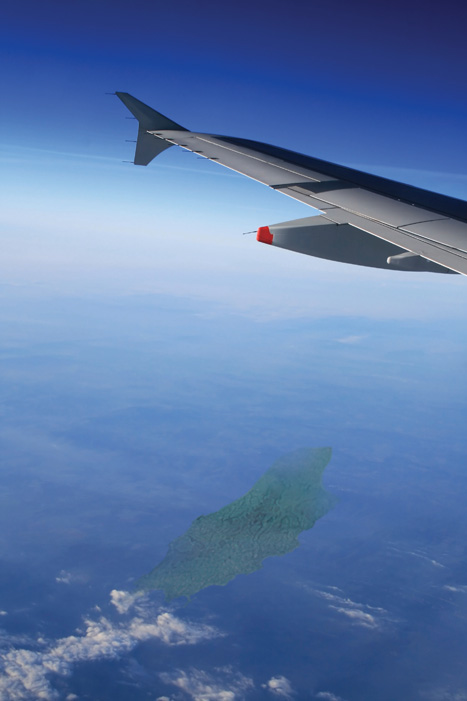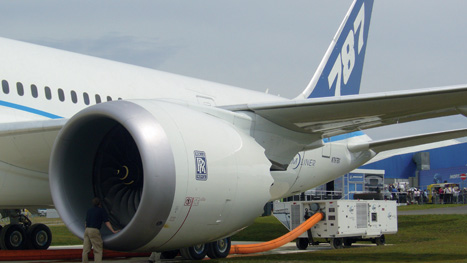
The Isle of Man is an oddity. The lozenge-shaped island in the middle of the Irish Sea, 32 miles (52km) long and 14 miles (22km) wide, is not part of the UK, despite being equidistant from England and Northern Ireland. Neither is it part of the EU. It has its own parliament and its own laws.
Other island communities around the UK are generally known for tourism, with relatively little industry other than agriculture and long-established, traditional sectors. But while the Isle of Man is still a tourist destination, it is steadily building up a reputation as a centre for some of the world’s most cutting-edge technologies.
The Isle of Man Aerospace Cluster (IOMAC) is a group of 17 companies based on the island, ranging in size from around 250 employees to three-person operations. Although small by global and even UK standards, these companies are involved in high-end design in the aerospace sector and production of precision components. Its development is part of a strategy by the Manx government to reposition the island’s economy away from offshore finance and insurance, an expertise it built up in the early 1980s, and towards a more diversified mixture of sectors. While the UK is taking its first steps along this path, the Isle of Man’s experience might provide an inspiration for its larger neighbour.
Adrian Moore, who combines the job of chairman of IOMAC with a role as development manager for industry and manufacturing for the Manx government, explained that the roots of the cluster go back to shortly after the Second World War. ’We have about 60 years of heritage in aerospace,’ he said. ’Ronaldsway Aircraft Company, one of our larger companies, started up from a family connection with Martin-Baker, the ejection seat specialist, and set up a self-contained factory here, where it completed full ejection seat assemblies; it employed about 800 people when techniques were more labour-intensive.’ Now employing 250 people, Ronaldsway has diversified and devotes around half of its business to supplying precision components to clients such as Rolls-Royce, BAE Systems and Airbus.
“These companies were bought because of their competency and are now centres of excellence”
Other established aerospace operations on the island were bought up by larger companies. A valve manufacturer called Kenmac, set up by a local engineer, was acquired by Swagelok, one of the world’s largest valve and regulator makers; while a branch of the Dowty conglomerate, producing undercarriage and actuation systems, was bought out by GE Aviation. ’As an island, you sometimes worry about these things: that the big boys are going to come in and buy our local factories, close them down and move production away to the US or east Asia. But the reality of it is that these companies were bought because of their competency, and they are now centres of excellence for what they do. Naturally, when you have these established companies, a supply chain grows up around them and other companies come to the island.’

The companies operate co-operatively, working together in areas such as lean manufacturing, joint purchasing and shared services, ’a raft of disciplines that make the businesses more efficient, competitive and agile,’ Moore said. The cluster arrangement also helps the members’ business strategy. ’As we’re an island, it’s quite easy to become isolated. Thinking strategically isn’t easy, particularly for the smaller companies, without the support of a cluster.’
For the companies, the financial policy of the Manx government is a strong inducement: the corporation tax rate is zero and companies can apply to the government for grants to buy equipment every year. ’You can come to us for an amount of money to buy a machine this year, if you can show that it will add value to your business and create extra profit and jobs. If you come back next year and show us the machine’s worked so well that you need another one, we’ll give you a grant for that as well. You can’t do that in the UK; grants are available and they’re sometimes very large, but they tend to be one-offs. Maybe this system of annual smaller grants is something the UK could take from us.’
One major disadvantage for the Isle of Man when it comes to high technology is its lack of a university. Although it is possible to gain a degree in aerospace engineering with the IOMAC companies, there is no source of home-grown graduates. ’We have exactly the same problem with a skills gap as the UK; we have scary statistics about retirees and a lack of people to replace them, so we have to create skills fast.’

To address this, the IOMAC companies have set up an apprentice scheme. ’We’ve had a scheme here for some time, which is a standard course of the principles of engineering. [Now] we’ve turned that on its head: the businesses here have worked with the technical college and created the curriculum they teach, with the basics of materials understanding, machining techniques and so on, but we introduce concepts such as lean manufacturing and social awareness early on. We all need to be ambassadors for the industry, whether we’re in the design office or the stores.’
This approach appears to be paying off. ’Typically on the island, when firms advertise for apprentices, we’ve struggled, mainly because of the image problem associated with manufacturing. We’d typically have six applicants for five apprenticeships and ended up with only one who could take it on as a career. This year, we had a company advertise for six apprentices and get 60 applicants; and we’re seeing similar things right across the sector.’
Q&A Reaching for the sky
Is the aerospace sector a good fit for an island economy?
Yes, in that it’s very much a high-value, low-volume sector and that suits us well. Obviously all our materials have to be shipped in and all the goods shipped out, and there are costs associated with that, so making small components that have a lot of value added in the manufacture suits us very well.
Are more companies coming to the Isle of Man?
About half my time is taken up with attracting inward investment and the existing companies we have here are a big plus. As a company looking to set up new facilities, you want to see that there are companies doing similar things and succeeding. I can talk until I’m blue in the face about how great the island is for manufacturing but just look at the fact that we have GE Aviation here; we have Swagelok; we have Asystems, working on designs for the A380 and the Typhoon. That, in itself, says a lot, because companies like that could be located anywhere and yet they choose to be here why would they, if it didn’t work?
What ways are you exploring to attract more companies?
Well, we do have advantages for companies that have gone beyond the R&D stage and are looking to commercialise. We’re very IP-safe, and we’re not bound by any borders we have free rein to work with any university that we want to. One of the ideas I’m developing is to establish a technology park, where inward investment companies can come and work in state-of-the-art buildings with like-minded companies, as we’d set up a technical college there as well. We can also act as a lever to attract companies to the UK, because we are part of the UK supply chain. A company could set up its R&D department here, or its logistics offices, and get the benefits in terms of the tax breaks and grants that we offer, while having its 500-employee factory in the UK.
The Isle of Man also has a fledgling space sector. Is that part of the aerospace sector here?
It’s developing alongside, and they’re obviously complementary. It actually started in the financial sector; the big players in the satellite community have offices here doing what you might call the financial engineering for satellite launches. For example, we have zero tax on insurance premiums, and you can imagine how expensive it is to insure a satellite launch. We’re now looking at moving on to the next stage in the space sector and the logical one is to see if we can get more manufacturing here. Most of the firms are involved in construction of satellites in some way and the aerospace cluster shows this is a good place for intricate work.










National Gas receives funding to develop Gravitricity underground hydrogen storage system
One single rock salt mine - Winsford - has 23 <i>MILLION </i>cubic metres of void and even allowing for 10% of that void set aside for hazardous waste...